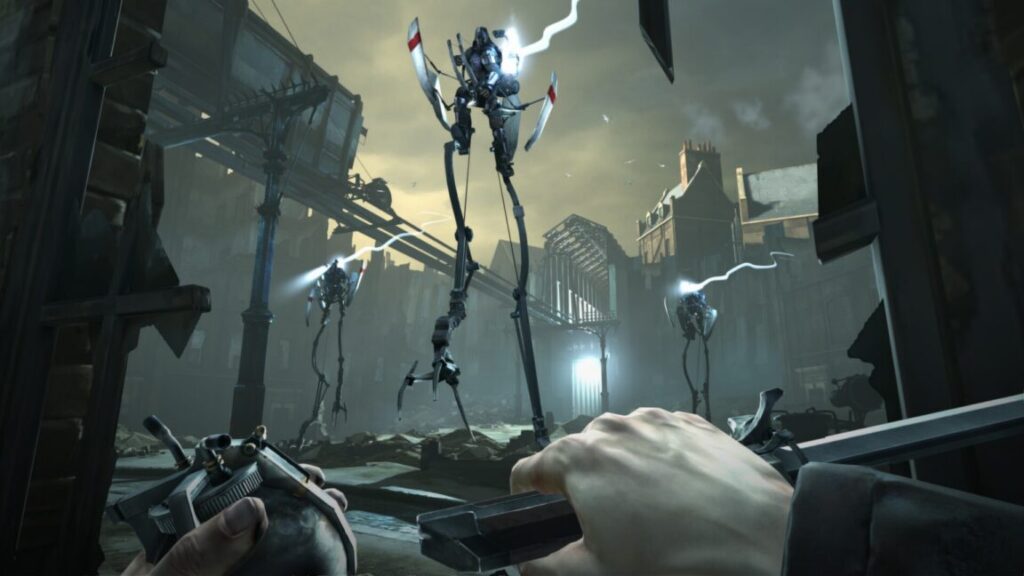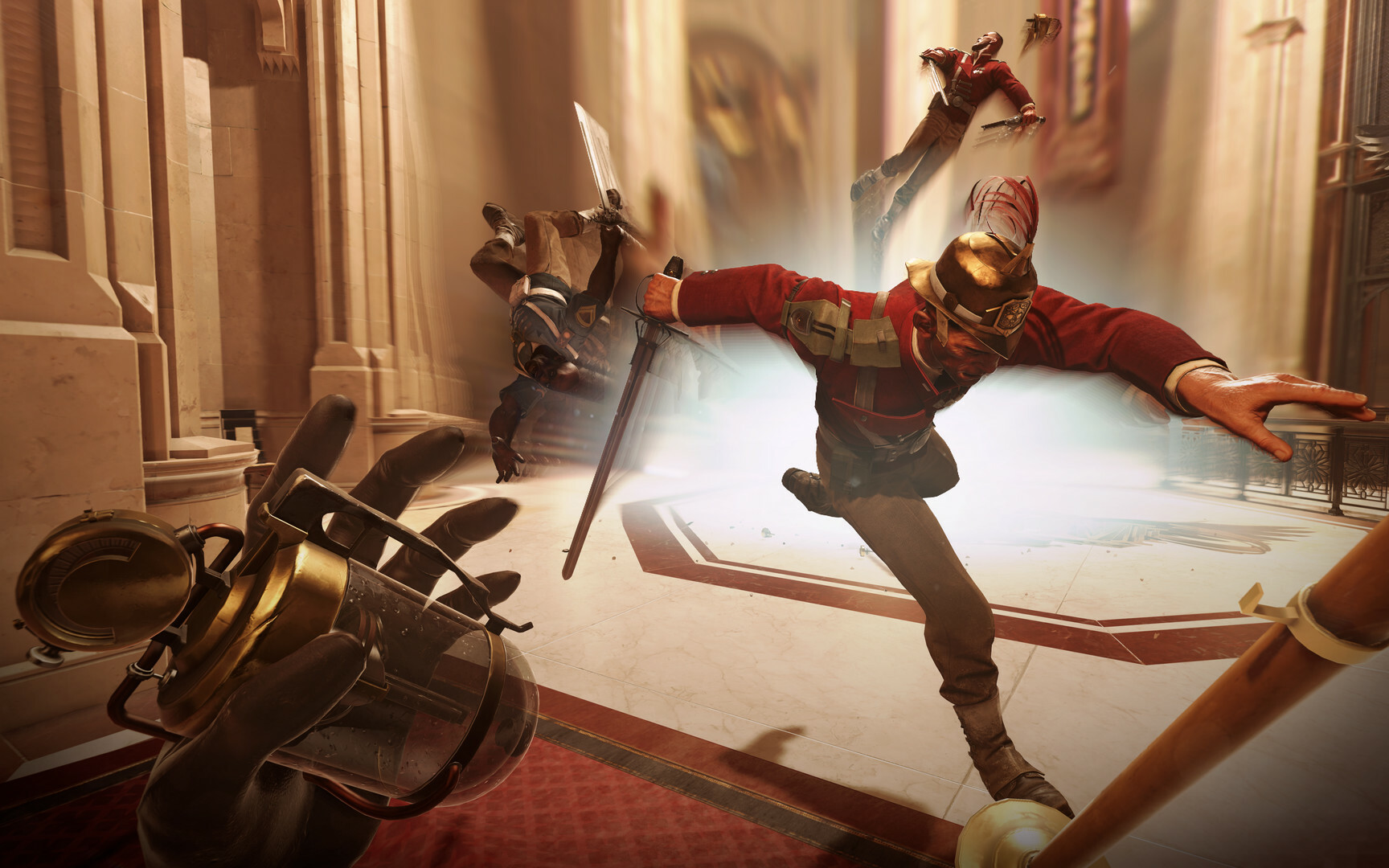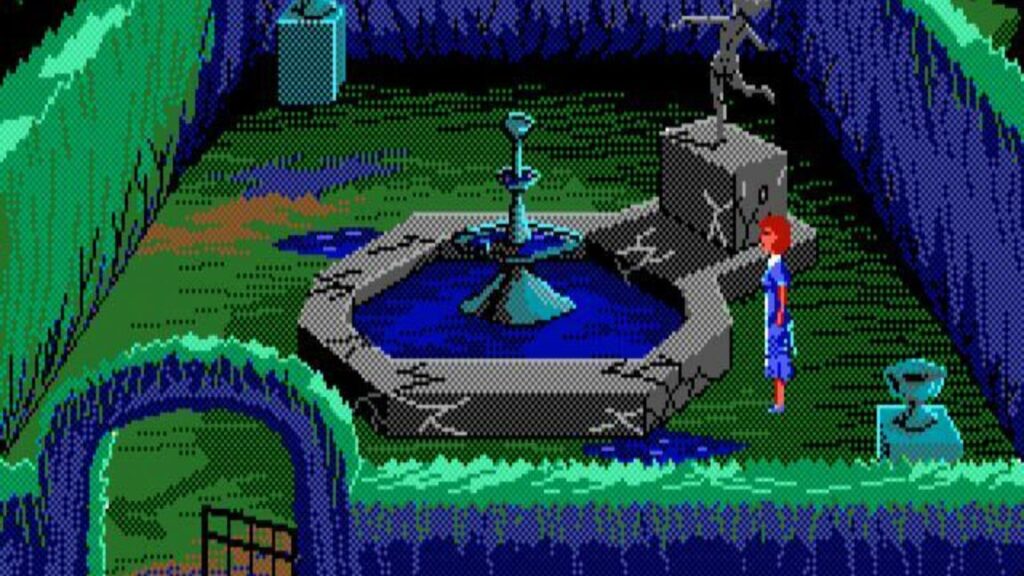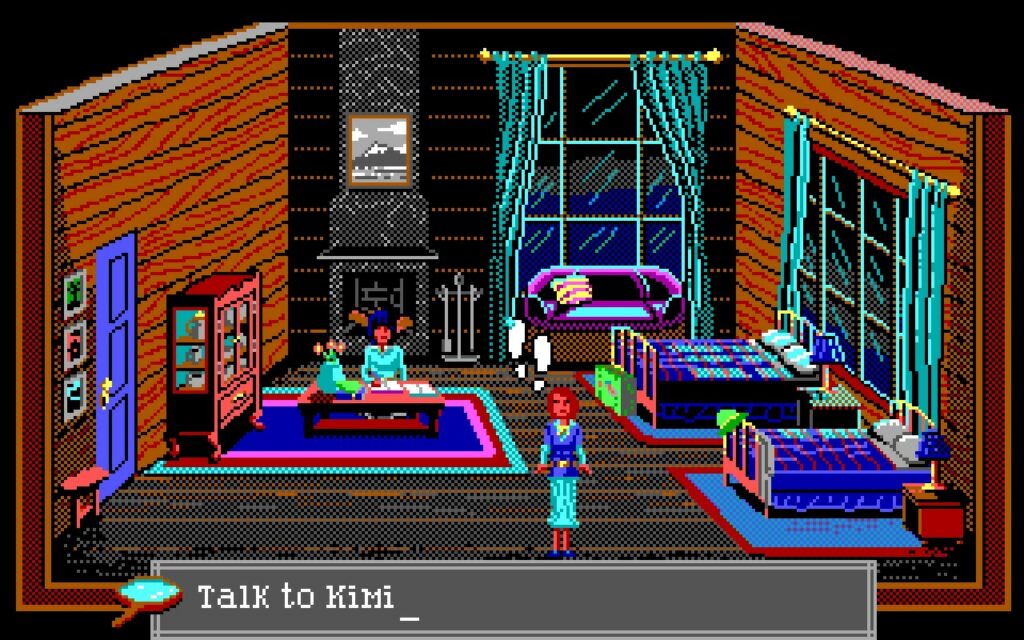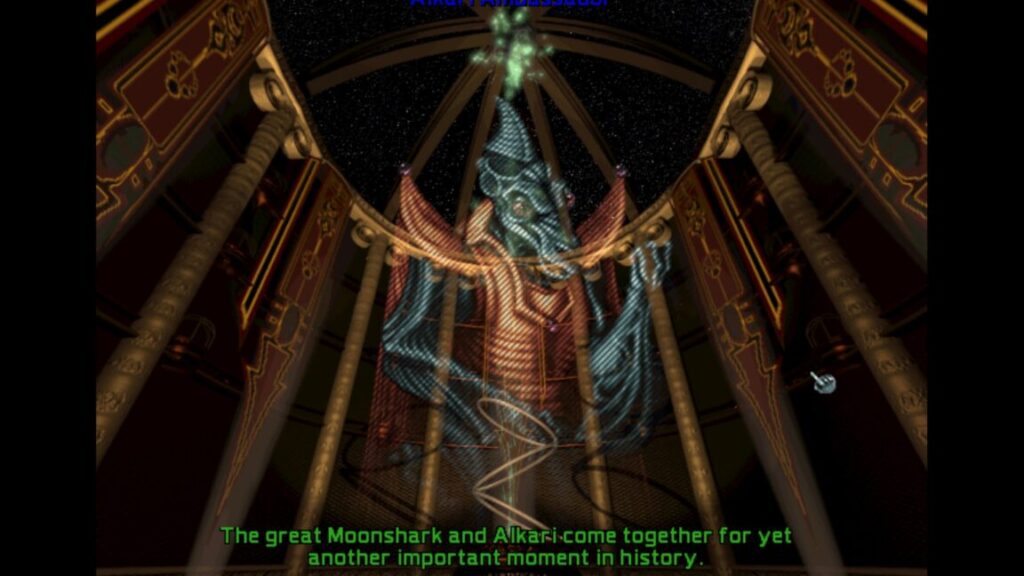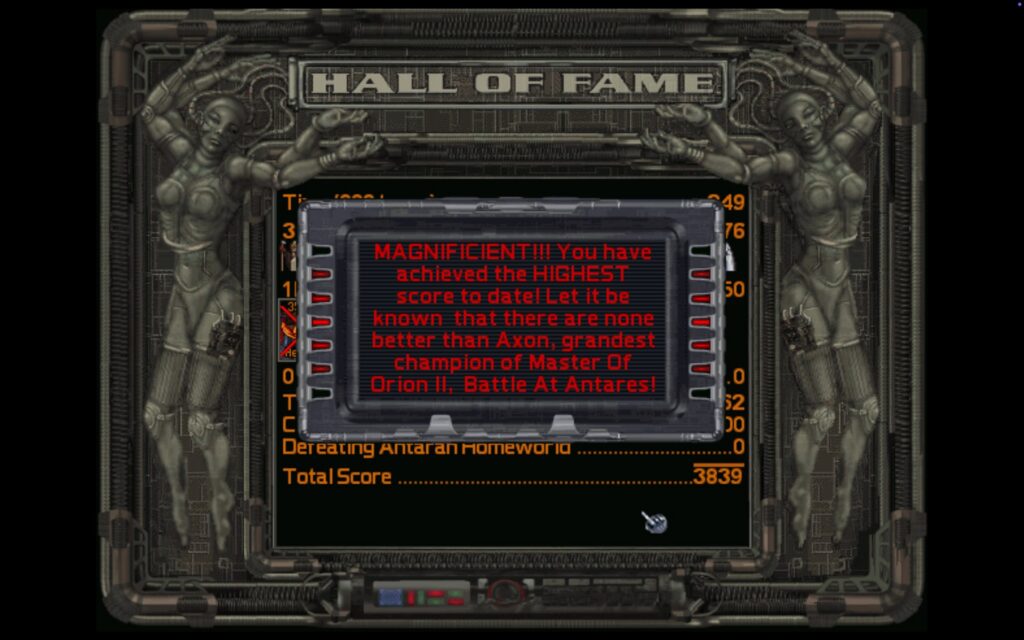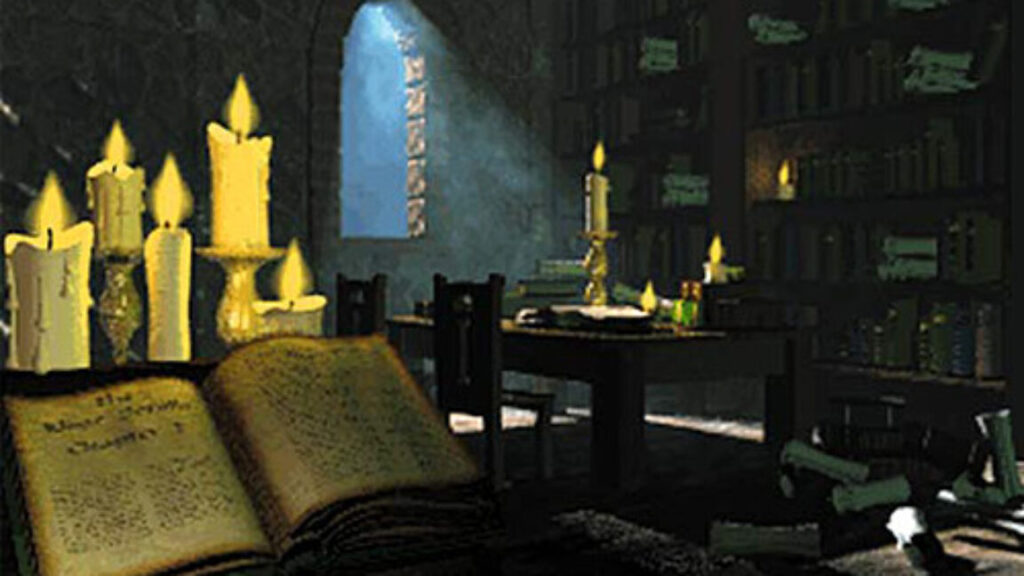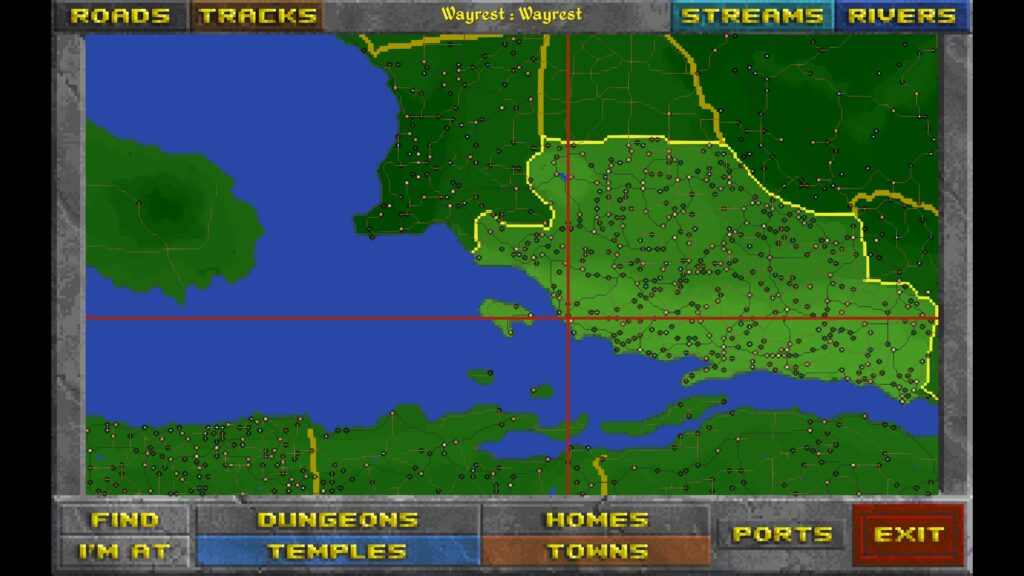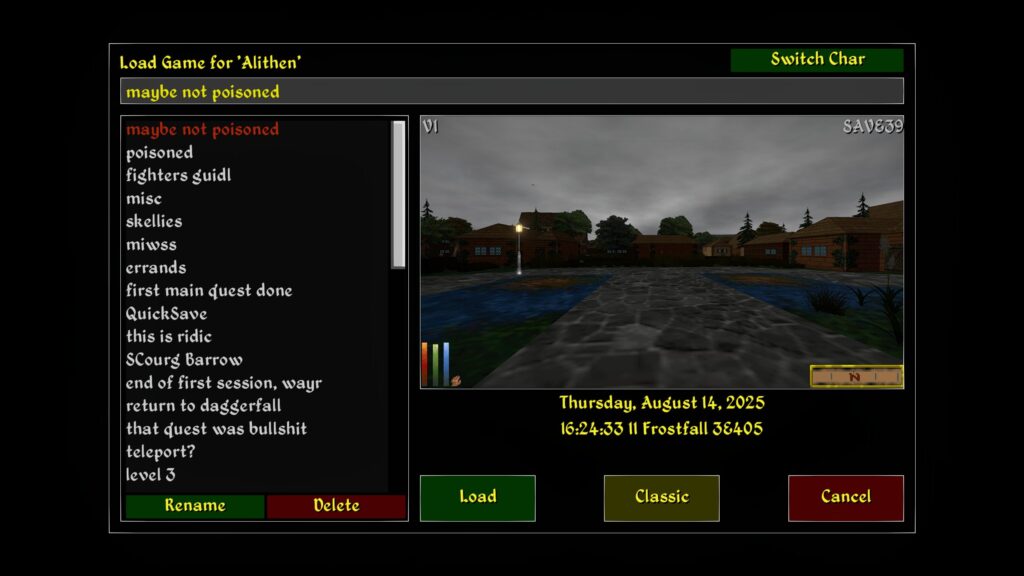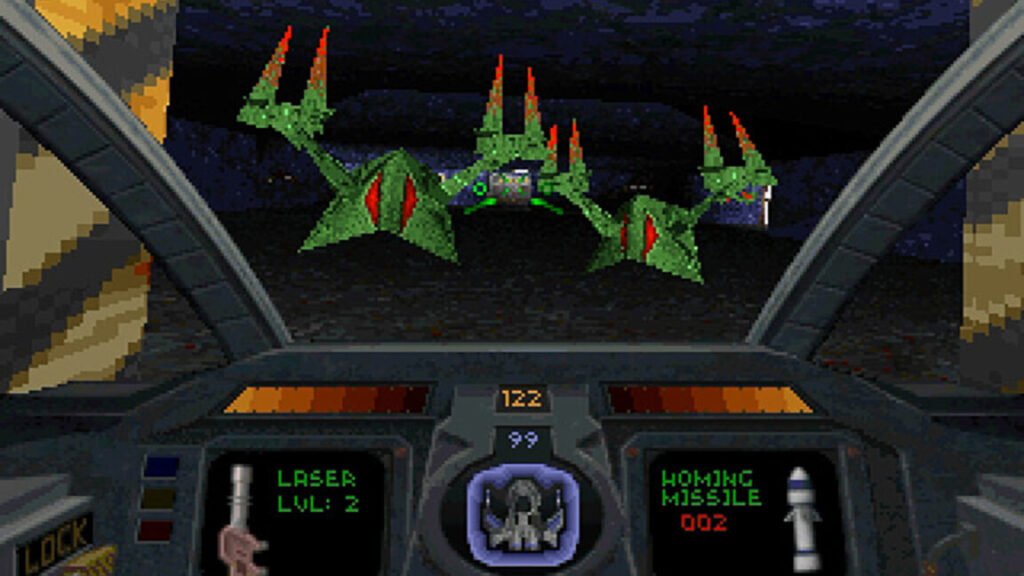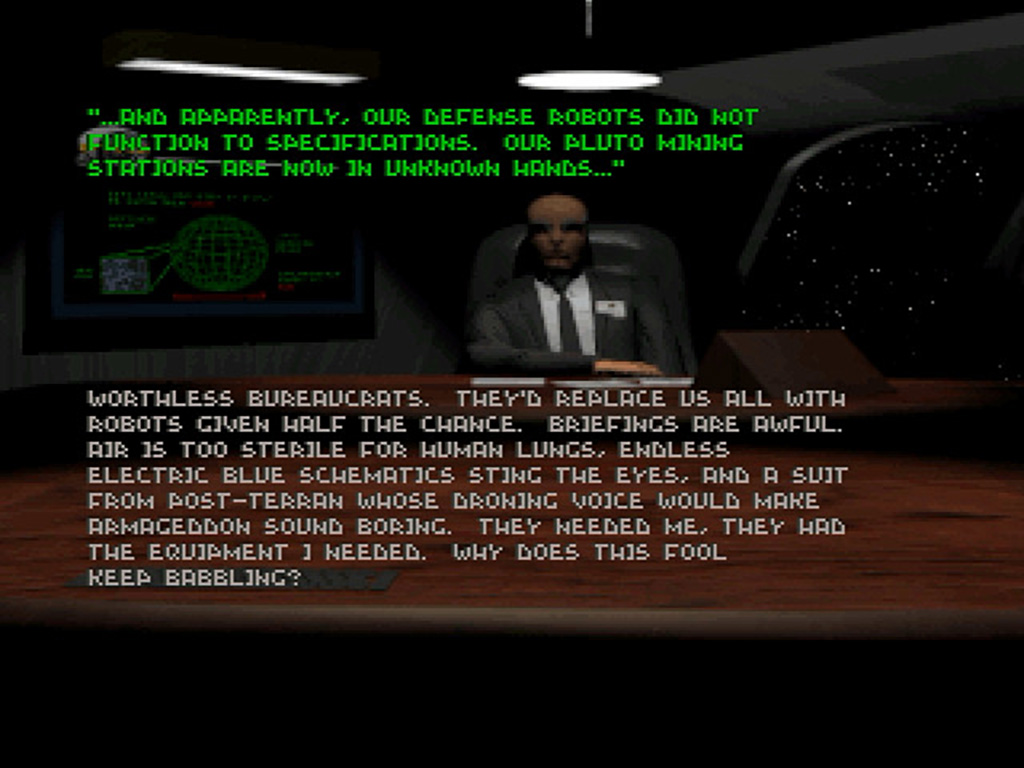Years later, Arkane’s Dishonored is still a modern stealth classic
Chief among these is the “blink” system, which lets you warp instantly from point to point in a way that reminds me now of the similar nausea-preventing movement systems seen in many virtual reality games. Here, being able to go from one hidden corner to another without the risk of being seen revolutionizes the stealth gameplay.
Hopping up to a nearby rooftop or down on top of an unaware enemy with a quick blink is incredibly satisfying, making you feel less like a crawling assassin and more like a bona fide superhero. The same goes for the “dark vision” that lets you see enemies and allies through walls, an ability that’s all the more necessary in a game without any sort of mini-map to help you get the lie of the land.
This screenshot makes the combat look more exciting than it is in practice. Credit: Arkane Studios
In contrast to the elegant, super-powered sneaking, combat in Dishonored can feel a bit slow and clunky. This is exacerbated by the game’s “chaos system,” which sends seemingly endless waves of enemies that turn each violent engagement into a war of attrition against a nearly overwhelming force.
It’s usually a better idea to simply blink away to safety until they quickly call off the pursuit. Or, better yet, just avoid combat altogether by sticking to the shadows, coming out only when you can take out your next assassination target cleanly and silently.
In a lesser game, the assassination-focused gameplay could threaten to feel too repetitive. But Dishonored‘s structure encourages different paths to that same final goal in each mission, from magically assisted sneaking to social manipulation and eavesdropping to actually taking a moral stand in a long-running feud.
Add in side quests that offer plenty of opportunity for creative problem solving, and you have a game that encourages multiple playthroughs to explore all the different ways you can succeed. That should provide enough of an excuse to revisit Dishonored, or to dive in for the first time if you missed it during its debut.
Ars Technica may earn compensation for sales from links on this post through affiliate programs.
Years later, Arkane’s Dishonored is still a modern stealth classic Read More »
